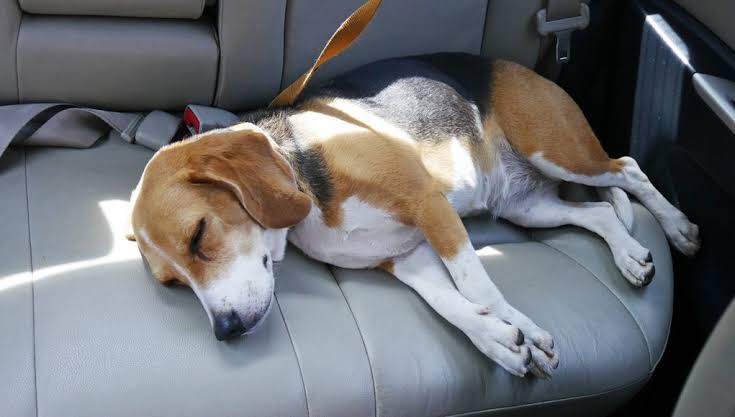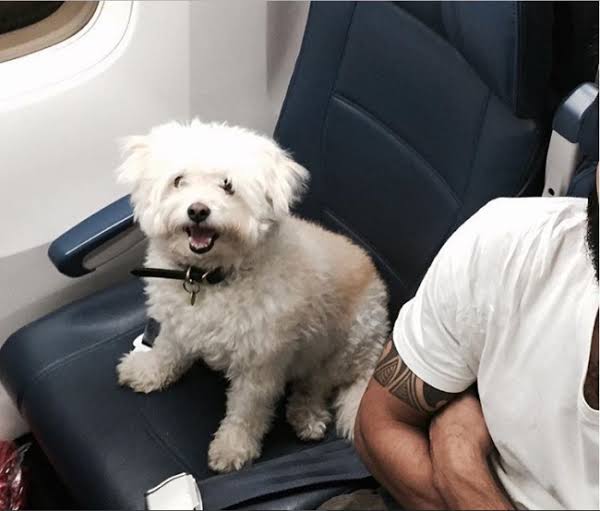Dog Sedatives for Flying: Should I use them?


Traveling with your paw friend, as a dog owner, can be both exciting and challenging. Flying with your dog can be particularly nerve-wracking, as you may worry about how your pet will react to the stress of air travel. Some pet owners may choose to use dog sedatives to calm their dogs during flights. However, before deciding to use these sedatives, it is important to consider the risks and benefits.
What are Dog Sedatives?
Dog sedatives are medications that help to calm your dog’s nerves and reduce anxiety. They are commonly prescribed by veterinarians for a variety of reasons, including calming dogs during air travel. These sedatives come in various forms, including pills, liquids, and injections. Some common sedatives used for dogs include:
Acepromazine: This medication is a tranquilizer that helps to reduce anxiety and fear in dogs. It is commonly used before surgical procedures and during air travel.
Diazepam: This medication is commonly known as Valium and is used to reduce anxiety and muscle spasms in dogs. It is often used to calm dogs during air travel and can also help with motion sickness.
Alprazolam: This medication is commonly known as Xanax and is used to reduce anxiety and panic disorders in dogs. It can help to calm your dog during air travel and reduce nervous behavior.
Pros of Using Dog Sedatives to Fly
There are several potential benefits to using dog sedatives . These include:
- Reduced Anxiety:
Air travel can be stressful for dogs, particularly if they are not used to it. Using sedatives can help to calm your dog’s nerves and reduce anxiety during the flight.
- Preventing Accidents:
Some dogs may become restless and agitated during air travel, which can lead to accidents such as urination or defecation in the cabin. Sedatives can help to prevent these accidents by calming your dog and reducing their nervous behavior.
- Easier Transport:
If your dog is particularly anxious during air travel, it may be difficult to transport. Using sedatives can make it easier to get your dog to and from the airport, as they will be calmer and more relaxed.
Cons of Using furry Sedatives for Flying
While there are potential benefits to using dog sedatives for flying, there are also some risks and drawbacks to consider. These include:
-
Potential Side Effects:
Like all medications, dog sedatives can have potential side effects. These may include drowsiness, decreased coordination, and loss of appetite. In rare cases, sedatives can also cause allergic reactions or other adverse effects.
-
Masking Underlying Issues:
Using sedatives may mask underlying health issues or behavioral problems in your dog. If your dog is experiencing anxiety or nervousness during air travel, it may be a sign of a larger issue that needs to be addressed.
-
Unknown Reactions:
Every dog is different, and some may react differently to sedatives than others. It can be difficult to predict how your dog will react to sedatives, which can be concerning if you are traveling alone or with young children.
Alternatives to Dog Sedatives

If you are hesitant to use dog sedatives for flying, there are some alternative strategies you can try to calm your dog during air travel. These include:
-
Calming Supplements
There are many natural calming supplements that can help ease anxiety and stress in dogs. These supplements usually contain natural ingredients such as chamomile, valerian root, and passionflower, which are known to have calming effects on pets. These supplements come in different forms such as chews, drops, or capsules, and are available at most pet stores or online.
-
Essential Oils
Essential oils are a popular natural remedy for calming dogs during air travel. Lavender, chamomile, and frankincense are some of the essential oils that are known to have a calming effect on dogs. You can use essential oils in different ways, such as diffusing them in the air, applying them topically, or adding a few drops to your pet’s water.
It’s important to note that essential oils should always be used with caution and diluted properly. Also, it’s recommended to consult with a veterinarian before using essential oils on your pets.
-
Pressure Wraps
Pressure wraps, also known as anxiety wraps, are designed to provide gentle pressure to your pet’s body, which can help reduce anxiety and stress. These wraps work similarly to swaddling a baby and are believed to create a calming effect by releasing endorphins in your pet’s body.
There are different brands of pressure wraps available, such as Thunder shirt, which is a popular choice among pet owners. You can also make your own pressure wrap using a bandage or a scarf.
-
Crate Training
Crate training is an effective way to help your pet feel more comfortable and secure during air travel. Start crate training your pet well before the flight and make sure they have enough time to get used to their crate.
It’s recommended to place familiar items such as a blanket or a favorite toy inside the crate to help your pet feel more comfortable. Also, make sure the crate is well-ventilated and the right size for your pet.
-
Exercise
Exercising your pet before the flight can help reduce anxiety and stress. A tired pet is more likely to sleep during the flight and be less anxious. Make sure to take your pet for a walk or play with them before the flight, so they have enough time to burn off some energy.
(Like the other article, please use Heading 3 for the different points above)
.
Consult with Your Veterinarian

Before deciding to use dog sedatives for flying, it is important to consult with your veterinarian. They can help to determine if sedatives are a safe and appropriate option for your dog, and can also recommend alternative strategies if needed. Your veterinarian may also be able to prescribe a sedative that is tailored to your dog’s specific needs and health status.
Conclusion
Flying with your dog can be a stressful experience for both you and your furry friend. While dog sedatives may be a helpful option for some dogs, they do come with potential risks and drawbacks. Before deciding to use sedatives, it is important to consider the potential benefits and drawbacks. Also, consult your veterinarian to determine the best course of action for your dog. With proper preparation and care, you can help to ensure that your dog’s air travel experience is as safe and stress-free as possible.
Watch the video below




